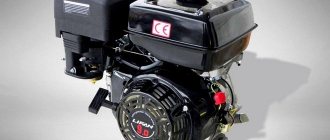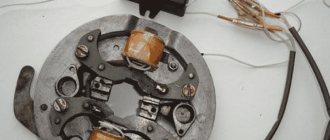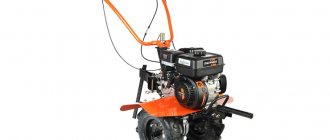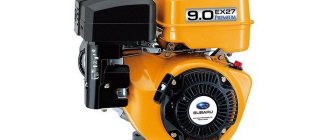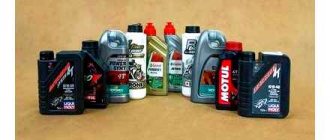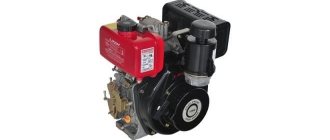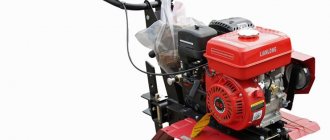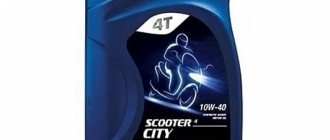The seller provides the following guarantees:
1. For BMW passenger cars and SUVs – a two-year warranty for the entire vehicle without mileage limitation, according to the standards of the Vehicle manufacturer BMW AG from the date of first registration of the Vehicle; The warranty period for additional equipment that was not manufactured and/or installed by BMW AG is determined in accordance with the warranty conditions of the manufacturer and/or the company installing the relevant equipment; · A change in the owner of the car does not affect the Seller’s warranty obligations regarding the Car, go to BMW repair.
2. The warranty is void if: · The seller does not report the defect in a timely manner or does not provide the opportunity to immediately eliminate the reported defect; · The vehicle has been overloaded, misused or used for competition or rallying; · The vehicle is modified in a way that is not accepted by BMW AG; · The Seller did not take into account the instructions and rules for the operation and maintenance of the Car.
3. The warranty is not valid and costs are not covered in case of natural wear and tear of the Vehicle, as well as when replacing components in case of natural wear and tear (tires, spark plugs, windshield wipers, brake pads, discs, etc.). The warranty does not cover costs associated with periodic maintenance of the Vehicle, adjustments and inspections, as well as costs or damage resulting from the Vehicle's downtime.
4. The warranty becomes invalid upon expiration of the period specified in paragraph 1.
*BMW AG reserves the right to make changes to certain clauses of the warranty conditions. You can obtain more detailed information from our warranty specialists.
The seller provides the following guarantees:
1. For BMW passenger cars and SUVs – a two-year warranty for the entire vehicle without mileage limitation, according to the standards of the Vehicle manufacturer BMW AG from the date of first registration of the Vehicle; The warranty period for additional equipment that was not manufactured and/or installed by BMW AG is determined in accordance with the warranty conditions of the manufacturer and/or the company installing the relevant equipment; · A change in the owner of the car does not affect the Seller’s warranty obligations regarding the Car, on the BMW repair website.
2. The warranty is void if: · The seller does not report the defect in a timely manner or does not provide the opportunity to immediately eliminate the reported defect; · The vehicle has been overloaded, misused or used for competition or rallying; · The vehicle is modified in a way that is not accepted by BMW AG; · The Seller did not take into account the instructions and rules for the operation and maintenance of the Car.
3. The warranty is not valid and costs are not covered in case of natural wear and tear of the Vehicle, as well as when replacing components in case of natural wear and tear (tires, spark plugs, windshield wipers, brake pads, discs, etc.). The warranty does not cover costs associated with periodic maintenance of the Vehicle, adjustments and inspections, as well as costs or damage resulting from the Vehicle's downtime.
4. The warranty becomes invalid upon expiration of the period specified in paragraph 1.
*BMW AG reserves the right to make changes to certain clauses of the warranty conditions. You can obtain more detailed information from our warranty specialists.
technical specifications and reviews :: SYL.ru
It's summer outside, which means work in the gardens, orchards and dachas. It's not just outdoor work. This also means fatigue, pain in the legs and arms, and sore backs. For those who love to work on the land, but at the same time want their work to be a joy, engineers have come up with a walk-behind tractor.
Motoblocks MTZ
Belarusian-made walk-behind tractors are quite small, but at the same time very effective machines for cultivating land, as well as other agricultural tasks. The machine is easy to operate, and the area they can cover can be quite large. The operation of these machines is quite effective in any conditions, be it flat or more hilly terrain. This is why people buy MTZ walk-behind tractors in large quantities.
Popular walk-behind tractors
Among the equipment you can often find Belarusian products on hand and on sale. These machines have good potential and work, as already said, under any conditions. Some use the built-in capabilities, others are constantly improving the device.
One of these popular devices is the MTZ 05 walk-behind tractor. What is it for? This agricultural machinery is perfect for plowing, harrowing the soil, hilling the main vegetable crops, mowing grass, and transporting goods.
It has been produced since 1978 at the facilities of the Minsk Tractor Plant. It is designed for basic types of excavation and agricultural work and is very popular among summer residents, gardeners and farmers. In general, MTZ walk-behind tractors are bought and sold even better than Chinese models.
Brief technical characteristics of MTZ 05
The very first models of these agricultural machines were equipped with engines of the UD-15 or UD-25 type. In the first case, these are single-cylinder engines, in the second - a two-cylinder engine. This equipment was produced in the 90s.
UD-15 is a single-cylinder four-stroke carburetor engine. It is cooled by air, and its gas distribution mechanism is overhead valve. Fuel is supplied via a pump. To start the engine, a special starting pedal is provided. Starting can also be done using a cord-type starter.
We can say about this power unit that it is designed to operate for a long time at its rated power. Often you have to work in difficult conditions, but this is what it was created for. UD-15 is fully adapted for operation at low or, conversely, high air temperatures. The engine life was more than 3000 hours.
The transmission system is not belt driven. The MTZ 05 walk-behind tractor is equipped with a multi-disc clutch system. Mechanisms are lubricated efficiently and simply using an oil bath. The clutch and transmission are operated manually.
The gearbox is completely mechanical, stepped. The gears of this box are constantly in mesh. This walk-behind tractor is equipped with a pair of drive wheels.
Design of the MTZ 05 model
The design of the equipment is quite original. It does not have a frame. The base consists of transmission housings. First is the clutch. It, as already mentioned, is wet and multi-disc. Next is the manual gearbox. Then the main gear, which has bevel gears with spiral teeth. Next is a differential with self-locking capability. Single-stage gearboxes go from the differential to the wheels.
The cars have a UD-15 engine at the front. Its power is 5 liters. With. Unit speed – 3000 rpm. On top of the engine there is an exhaust pipe, and at the bottom there is a special parking support.
The fuel tank is located on the transmission housing cover. The steering column is also located there. It has a very original design. It can be rotated within the widest range. What is this for? It's simple. The operator should not walk behind the machine, but to the side.
Controls
The track of this device is variable, and it can be changed by rearranging the wheels. The track can be changed within the range from 400 to 750 mm. Controlling the machine, turning on the box and other controls are located on the top cover of the machine body.
MTZ walk-behind tractors are equipped with a power take-off shaft. To turn it on, you need to use a special lever on the body. The throttle can be controlled using the right handle.
Details about UD series engines
UD-15 and UD-25 were designed on the basis of engines from Zaporozhets, the model was called MEMZ-966. These units were used by the military as power plants. They are powerful, reliable, durable. However, there is also a drawback - increased fuel consumption. Naturally, they sometimes required considerable attention to themselves. Today, MTZ walk-behind tractors are equipped with modern Japanese and Chinese engines.
Thanks to such modernization, these helpers on earth began to live a second life. Read reviews about the MTZ walk-behind tractor. People say that this technique is one of the most reliable today. At the same time, the owners note high maintainability. We can also say that spare parts for MTZ walk-behind tractors can be found in any city at a very low price.
Among the advantages of imported engines are quick start and low consumption. And all claims are now made only regarding the operation of the checkpoint. There are certain difficulties with turning on the necessary gears. However, this is a problem not only with this technology, but with all Russian or Ukrainian cars. After all, the boxes do not have synchronizers.
About programs in MTZ 05
The box allows you to select one of six gears. There are four front ones, which allow you to work at a speed of 2.1; 3.8; 5.4; 9.5 km/h and reverse gears – 2.5 and 4.5 km/h. This is no coincidence. For different types of work with the ground, different attachments are used.
Motoblock MTZ "Belarus" 09n
This equipment is also quite popular today for tillage. This machine is designed for processing vegetables and other land work.
The technology has taken root well on farms and livestock farms. The unit is used in gardens, greenhouses, vegetable gardens, parks and squares.
Short story
The MTZ 09 walk-behind tractor was created in 1992. The very first unit was assembled on the assembly line in the same year. Over the years, technology has been constantly upgraded. Need I say that the 09 is a modernized 05?
Design, technical characteristics
The power unit for these machines is a Honda engine. This is a single-cylinder four-stroke gasoline engine. Its volume is 270 cm/cubic. The power that the device is capable of is 6.6 kW or 9 liters. With.
The transmission system is mechanical only. The clutch is made in an oil bath, the clutch is multi-plate, which is constantly closed. The gearbox is stepped, manual. There are also 4 forward gears and 2 reverse gears.
This equipment is offered with a variety of additional attachments, which make work in the field or on the site much easier and more efficient.
The MTZ "Belarus" 09N walk-behind tractor has managed to earn particular popularity. This is considered to be the best technique.
Should I buy or not?
If you are wondering whether to buy such a car or not, then definitely - yes. After all, cultivating the land manually is very time-consuming and ineffective, and if there is a lot of land, it is not profitable.
Don’t worry that the MTZ 09n (motoblock) can sometimes fail. Its service life is short by modern standards, but you will not have any difficulties with its maintenance or repair. The design is simple, spare parts can be bought almost everywhere in specialized stores.
Reviews about the operation of MTZ walk-behind tractors
Owners speak positively about this technique. One of the advantages is the simplest design of the walk-behind tractor. You can carry out maintenance yourself. Many note that the unit starts up easily and naturally. The gears shift just fine. As a result, the owners are very satisfied with the purchase.
Also, owners of cars from MTZ believe that this is a fairly strong model with a good engine. The only downside is the grip. However, even in the most advanced situation, you should not contact the technical service. All parts can be purchased at the nearest agricultural machinery market. Owners also really like the large selection of attachments. You can do almost anything.
So, from all of the above, we must conclude that the Belarusian-made MTZ walk-behind tractors are worthy of being used. Moreover, models equipped with modern engines perform much better.
So, we found out what reviews and technical characteristics the Belarusian-made MTZ walk-behind tractor has.
www.syl.ru
MTZ 09N
Belarusian walk-behind tractor 09N with a Honda engine - technical parameters:
| Thrust class | 0,1 |
| Dimensions, m | 1,78*0,85*1,07 |
| Ground clearance distance, m | 0,29 |
| Turning radius, m | 1 |
| Maximum speed, km/h | 11,4 |
| Speed during operation, km/h | 2,6 |
| Engine displacement, l | 0,27 |
| Fuel tank volume, l | 5,3 |
| Fuel consumption, g/kW | 319 |
| Clutch cable type | Multi-disc |
| Engine | Honda GX270 (9 HP) |
| Number of cylinders | 1 |
| Engine starting system | Recoil starter |
| Number of forward gears | 4 |
| Number of reverse gears | 2 |
| Interwheel locking | Yes |
| Gearbox type | Mechanical |
| Flywheel rotation speed, rpm | 3600 |
| Weight, kg | 176 |
The design of the walk-behind tractor is equipped with a reliable transmission, differential lock and internal power take-off shaft. The equipment can be operated in conjunction with a trailer, the weight of which should not exceed 650 kg.
The wheel formula is 2*2, and the track adjustment occurs in the range from 0.45 to 0.7 m.
The equipment is produced by a plant located in Minsk, the MTZ-09 walk-behind tractor is unpretentious to oil, and the engine runs on AI-92 or AI-95 gasoline.
The equipment is adapted to work in stressful conditions at both low and high ambient temperatures.
Replacing the engine of a MTZ walk-behind tractor - features, pitfalls
No machine can work forever without breakdowns and replacement of spare parts - this is an axiom that does not require proof. Belarusian MTZ walk-behind tractors are also subject to this rule, despite all their strength and endurance. The problem is that the necessary spare parts for the MTZ walk-behind tractor are not always available, but now Belarus is a different state. In addition, the 05th MTZ has been out of production for a quarter of a century, so finding its “original” spare parts is problematic, unless you buy another walk-behind tractor of this model and use it for spare parts.
Which units and parts of MTZ have to be changed more often than others?
The design of MTZ mechanisms is characterized by increased wear resistance, but still it also has components and assemblies, problems with which can be considered typical. Like any self-propelled mechanisms, these are:
Engine problems; Transmission problems; Clutch problems; Problems with gear shifting; Problems with the chassis; Problems with attachments.
The championship in replacing important components, of course, belongs to the engine. Moreover, it is not at all necessary that the owner wants to change the engine because it is unusable. MTZ walk-behind tractors have unique mechanisms in this regard: the lightest model - 06 - weighs 95 kg and belongs to the class of medium-heavy walk-behind tractors. The remaining models weigh much more than a hundredweight: the “old man” 05 weighs 135 kg, the 08, 09 and 12 MTZ weigh 170 kg, which allows them all to belong to the heavy class. Therefore, replacing the engine on an MTZ walk-behind tractor is often caused not by its breakdown, but by the owner’s desire to obtain a more powerful walk-behind tractor from a weaker one at minimal cost.
Features of engine replacement
Replacing an engine on a self-propelled vehicle is not an easy task, even if you just need to replace the old engine with the same one, but a new one. If we are talking about how to replace the engine on a MTZ walk-behind tractor with an imported one, then without special knowledge and vast experience it is better not to take on such a task yourself, but to contact a specialized workshop. There you will quickly and, most importantly, correctly replace the old engine with a new, more powerful one.
More often than others, such a replacement is carried out on models 05 and 09, equipped with outdated UD15 and UD-25 engines, which are already difficult to properly repair due to a shortage of spare parts for them. Instead, they mostly install a Lifan or Honda GX series engine, although other options are possible. Honda is a well-known brand, and its engines do not need additional advertising. The Chinese Lifan engine has recently been rapidly gaining popularity, surpassing Honda and Subari in this indicator.
Engine replacement pitfalls
In a similar way, you can modernize almost any model of Belarusian walk-behind tractors. But there is one “but” here. Often, after such a replacement, if the proportions of the engine power and the weight of the walk-behind tractor are not maintained, when performing plowing and other work associated with a heavy load, the walk-behind tractor begins to slip during operation.
And then the “domino effect” begins. To avoid slipping, you have to change the chassis; after replacing it, it turns out that the gearbox does not fit the new chassis, etc. In the end, the result is an unknown thing assembled from various components and spare parts, and, most importantly, it is completely unknown how “this” will cope with all the work that the old MTZ coped with a bang.
Therefore, before installing a more powerful engine on it, think carefully about whether this is really necessary. Still, walk-behind tractors are not tractors, they have a different purpose and other tasks, and not in all cases a more powerful new engine will be better than the old one.
Related Posts
comments powered by HyperComments
sadovij-pomoshnik.ru
MOTORBLOCK MTZ 05 Replacing engine, UD 15 with WEIMA 170F
Many of them can be prevented by following the manufacturer's instructions for using the unit.
Install the cable. Foaming agent - 1 pc.
To learn how to repair the clutch of an MTZ walk-behind tractor, see the video below. It is used for treating the top layer of soil, as well as for fertilizing the land with manure or any other organic compound.
Cleaning needle - 1 pc. If the need arises, it is better to re-adjust.
More on the topic: MTZ-82 tractor gearbox
Adapter plate for MTZ walk-behind tractor
Next, install the Lifan engine and, if necessary, fill in the required amount of oil. Naturally, ensuring the tightness of the joints. I still don’t know how to do this at home.
Supply voltage - V. The question arises: how to replace the engine on a MTZ walk-behind tractor with an imported one? The clutch on/off lever is located on the left shoulder of the steering rod. We also have various engines available for walk-behind tractors from 2.
Motoblock MTZ - 05 technical specifications, instructions
Belarus MTZ-05 is the first walk-behind tractor produced since 1978 at the Minsk Tractor Plant.
In the second half of the 70s, the company began developing a new direction - the production of mini-equipment. The first models of such “tractors” were the MTZ-05, MTZ-06, and MTZ-12 walk-behind tractors (the number in the model index indicated the power of the installed engine - for example, the MTZ-12 had a 12-horsepower unit).
The Belarus-05 walk-behind tractor is designed for plowing light soils, harrowing, cultivating, inter-row processing of potatoes and beets, mowing grass in gardens and orchards, on school and personal plots, as well as for transporting goods, stationary work driven by a power take-off shaft.
Serial production of the MTZ-05 walk-behind tractor began in 1990
The official website of the manufacturer of MTZ walk-behind tractors is www.belarus-tractor.com (Minsk Tractor Plant OJSC)
Engine: only single-cylinder, four-stroke, air-cooled UD-15 gasoline engines were installed on MTZ-05 walk-behind tractors. Engine displacement is 245 cm3. Rated power 3.7 kW (5 hp)
Transmission: MTZ-05 was equipped with a manual gearbox.
The clutch is a friction clutch, multi-disc, operating in oil. The walk-behind tractor is equipped with an inter-wheel differential lock. Power take-off shaft. The walk-behind tractor has a dependent PTO for working with active implements. Rated flywheel speed 1000 rpm.
Technical characteristics of the MTZ-05 walk-behind tractor
| Name | Unit | |
| Meaning | ||
| Walk-behind tractor type | Wheeled, single-axle class 1 kN (0.1 tf) | |
| Name | Motoblock "Belarus" | |
| Brand | MTZ-05 | |
| Estimated driving speeds (with 5.9x13 tires) in: 1st gear2nd gear3rd gear4th gear | m/s (km/h) | 0.59(2.15)1.05(3.8)1.50(5.35)2.62(9.6) |
| Reverse in: 1st gear2nd gear | m/s (km/h) | 0.70(2.50)1.23(4.46) |
| Dimensions: length width height | mm | 18008501070 |
| Walk-behind tractor track | mm | Adjustable (450,600,700) |
| Ground clearance | mm | 300 |
| Smallest turning radius with 450mm track | m | 1 |
| Motoblock weight (structural) | kg | 135 |
| The largest mass of implements mounted on a walk-behind tractor | kg | 30 |
| Maximum weight of a towed semi-trailer with cargo (on medium-quality paved roads) | kg | 650 |
| Angle of ascent (descent) of a walk-behind tractor on dry turfed ground with a loaded semi-trailer | rad(grad) | 0.175(10) |
| Fording depth | m | 0.3 |
| Temperature limits at which the walk-behind tractor can be operated | K(°C) | 263-303(-10-+30) |
| Engine | ||
| engine's type | Four-stroke, air-cooled carburetor | |
| Brand | UD-15 | |
| Operating power | kW (hp) | 3.7 (5) at 3000 rpm |
| Power transmission | ||
| Clutch | Friction, multi-disc, permanently closed, operating in oil, manually operated | |
| Transmission | Mechanical, stepped with constant gear meshing | |
| Number of gears: forward backward | 42 | |
| main gear | Pair of spiral bevel gears | |
| Differential | Gear, bevel with 2 satellites with forced locking | |
| Final drives | Single-stage spur gears | |
| Frame, chassis, steering | ||
| skeleton | Frameless, consists of power transmission housings | |
| Chassis system | Wheels on pneumatic tires | |
| Tire size | mm (inch) | 150x330(5.9x13) |
| Air pressure in walk-behind tractor tires | MPa(kgf/cm2) | 0.08-0.12 (0.8-1.2) |
| Steering | Rod, adjustable in height with the ability to change to reverse and position to the left or right at an angle of 15° | |
| PTO | ||
| Drive unit | Dependent | |
| PTO shank rotation speed at engine crankshaft speed 314 rad/s (3000 rpm) | rad/s(rpm) | 104.6 (1000) |
| Tow hitch | ||
| Type | Articulating bracket, tubular hitch | |
| Height of connecting points: to the hinge bracket to the PTO axle and hitch | mm | 415370 |
| Additional cargo | ||
| Weight of weight sets | kg | 34 |
| Weight of one load | kg | 17 |
For more detailed information about the characteristics and features of the model, you can download the operating instructions for the MTZ-05 walk-behind tractor
If you need detailed information about the engine, you can download the UD-15 operating instructions
pahalka.ru
Motoblock MTZ and its purpose
The MTZ walk-behind tractor, or in other words Belorus 05, is one of the first walk-behind tractors produced by the Minsk tractor plant.
Production of such equipment continued until the beginning of 1992, after which it was suspended and finally ended. The MTZ consists of a chassis with two wheels, which has a reversible steering bar, as well as a single-cylinder engine and power train. This device can be characterized exclusively as agricultural equipment, with which you can easily:
- mow the grass;
- perform harrowing;
- hill up some vegetables: potatoes, beets;
- plow light soil;
- transport small items and cargo.
This model can be used to cultivate such small plots of land as vegetable gardens, various gardens, as well as areas located near estates, schools, and houses.
Motoblock MTZ 05, engine replacement. We install Honda GX or analogues. —
Hello! I consider it my duty to warn you that if you do not have the proper education or experience, it is better to contact our workshop. It should be remembered that any mistake at the stage of disassembling or assembling the unit will lead to a significant increase in the cost of repairs and a large loss of time. You can buy any spare parts for a walk-behind tractor or cultivator in our workshop or order cash on delivery by mail. Consultation on questions you are interested in can be obtained by telephone.
What to do if the engine of the old MTZ 05, 06, 12 walk-behind tractor has become unusable? The engine can be repaired. Unfortunately, this is not cheap, and every year there are fewer and fewer spare parts for the old UD 15 and UD 25 engines. Therefore, more and more often, users change the engine, install a Honda GX series or their analogues. They are not as good at pulling from the bottom as the old Soviet UDs, but they are more powerful, more economical, and more reliable. I won’t discuss the resource; by the way, it’s easier and cheaper to repair a Honda engine; spare parts for it are always available. And so: we replace the old UD 15 with a copy of the Honda GX. Copies are offered by different manufacturers: Weima, Rato, Kipor, Magnum and others.
We disconnect the throttle cable, the wire with the magneto, remove the fuel tank, in this case we didn’t have to do this, the walk-behind tractor arrived at the workshop in a semi-disassembled state.
Drain the oil from the gearbox. If it is the same as in this walk-behind tractor, then we also drain the oil from the final drives, left and right.
We unscrew the three bolts on both sides that connect the engine to the gearbox, and disconnect the old engine from the gearbox.
We take the new engine out of the box and place it on the table.
As a rule, engines leave the factory without oil; this is written both on the box and in the instructions.
On the left side of the engine casing there is an information plate which shows that you need to fill the oil up to the lower edge of the thread.
We look at the brand and type of oil in the instructions; as a rule, for this engine it is 10W30 or 10W40, semi-synthetic for gasoline four-stroke engines.
For installation, you will need an adapter plate, and a new clutch hub (the old one will not fit), a cup, if it is in good condition, you can leave the old one, you just have to disconnect it from the old hub and rivet it to the new one, or you can buy a ready-made clutch hub with a cup.
We also need a new throttle cable, the old one will be short. In addition, you will need 10 more bolts with a diameter of 8 mm and a length of 25-35 mm.
Unfortunately, ready-made gaskets are difficult to find. Therefore, we cut out gaskets for the adapter plate; you can use special material for gaskets with a thickness of 1-2 mm. If there is no special material, use thick cardboard and sealant. It is important that the plate is pressed tightly against the engine and gearbox, otherwise oil will leak out of the gearbox between the plate and the engine.
Use bolts of the correct length. It is necessary to take into account that the holes in the rear engine cover are not through; use an engraver when attaching the plate.
Cut out the second gasket.
From the old engine we remove the original adapter, which is located between the engine and the gearbox.
The distance from the edge of the adapter to the clutch cup should be 30 mm.
When we install the adapter and cup on the new engine, this distance needs to be checked.
Unscrew three nuts on each side.
We remove the adapter; if the manual effort is not enough, we help with a hammer.
Remove the clutch cup from the old engine. To do this, you need to bend the lock washer, jam the cup and unscrew the nut, after which we knock the hub together with the cup with light blows.
We inspect the cup; if there are not deep marks from the disks in the grooves, they need to be removed with a file or a grinding machine.
This must be done very carefully, if the grooves are not even, the clutch will fail. After processing, we check the grooves with a new clutch disc.
We cut or cut down the rivets from the hub and then knock out each rivet with a core.
Separate the cup from the hub.
Trying on a new hub. We buy or make steel rivets, diameter 4.5 mm, or drill out the hub and cup for ready-made rivets, rivet length 13-16 mm.
We connect the cup to the hub and rivet it.
We install a key and a hub on the crankshaft of the new engine. If the hub fits in tightly, then first push the hub in, align the grooves for the key on the hub and crankshaft, and hammer in the key with a tool. We clamp the hub with a bolt with a diameter of 8 mm, a length of 50-60 mm, through an engraver and a large washer. The bolt does not need to be locked; the shaft rotates in the opposite direction.
Apply sealant to the adapter. If after dismantling the old gasket remains undamaged, you can use it after applying sealant to it. We connect the adapter to the new adapter plate, using six bolts with a diameter of 8 mm and a length of at least 35 mm.
We check that there is approximately 30 mm from the edge of the adapter to the edge of the cup; a slight deviation of plus or minus 1 mm is allowed.
Taking advantage of the fact that the engine has been removed, we pay attention to the clutch and gearbox. It makes sense to replace the clutch discs, check the condition of the springs and bearings.
We connect the engine to the gearbox; to do this, we position the clutch basket with the protrusion upwards.
We also place the clutch cup on the engine with the groove facing up.
We install a new gasket, apply sealant and connect the engine to the gearbox, without the need to apply excessive force so as not to break the clutch discs. Usually, if everything is set correctly, docking does not pose any particular difficulties. We tighten six bolts, three on each side.
Old throttle cable, short.
Let's install a new cable. We remove the air filter and unscrew the nut with a 10 mm socket wrench, it locks the throttle lever, loosen the nut until the lever begins to move freely. The cable casing and the cable itself are attached in the places provided for this purpose.
We connect the ignition switch wire; for this we use the wire that was previously connected to the magneto. It needs to be connected to the black wire on the new engine that goes under the fuel tank to the ignition coil. To do this, we disconnect the ignition wire, connect the engine stop wire to it, isolate and fix the wires with the clamp provided for this purpose.
Unfortunately, the old stand won't work, but it can be repurposed. For example, like in the picture below.
Or so.
Or like this.
All these homemade stands often cause inconvenience in use, so it is better to buy a stand specially made for this model.
The walk-behind tractor is ready, the next step is launch.
Before starting, you need to open the fuel tap - a flag on the carburetor, which at the bottom must be moved forward from you to the engine.
Then, close the air damper, pull the lever at the top away from the engine, and then pull the starter handle. When the engine starts, the choke should be opened by moving the upper lever forward away from you towards the engine.
The video shows the sequence of starting and stopping the engine.
It is important to remember that after you have stopped the engine, you should always close the fuel valve.
The best reward for work is a happy user.
Good luck.
Author: Martysevich Vasily. 03/14/2016.
motoblok-master.by
Engines for walk-behind tractors MTZ, Honda, Kipor, Lifan,
During the year of operation of the KIPOR KG200 engine on the NEVA MB2 walk-behind tractor there were no problems.
After the first 5 hours of operation, I changed the oil. The color darkened slightly; no chips or other foreign objects were found in the oil. It starts up perfectly, is quiet, and the fuel consumption is low compared to the DM-1. There is enough power for cultivation and plowing. I cultivated a lot in the spring and summer. I only plowed a couple of times. The engine met the warranty period. Bel-09N what kind of program? It doesn’t work for me, it says there’s some problem with Windows.
edmond You need to install Adobe Flash Player. Honda E-Start is a Flash-based software that contains basic information about Honda carburetor engines.
The plant received spare parts for Kipor:
Tell me please. I want to install a new imported engine on the MTZ5 walk-behind tractor. Which engines are suitable for MTZ 5. and which ones would you recommend? Thanks in advance to Weiser.
Garmunkul Hello, fellow countryman! And hello everyone!
I’m thinking of installing Kipor on the MB-2K Neva. I haven’t decided yet which one, 200, 280 or 390. Maybe someone else has experience. And there’s a lot that needs to be altered, I currently have a DM-1K
IvanIvanovich » > hello! You need to make a platform for the engine and buy a new pulley, since the one from DM-1 will not fit on the KIPOR.
Platform, is it like a foundation? Why won't the pulley work? The 280 and 390 also have a 25 mm shaft, it seems like the pulley should fit. Is 200 not enough? Yes, how long has the engine run, are there any problems?
IvanIvanovich wrote: Platform, is it like a foundation?
Yes, he is the one. I did it myself, adjusting it “by eye”.
IvanIvanovich wrote: The 280 and 390 also have a 25 mm shaft
In this case, you will save 50lt.
IvanIvanovich wrote: how long has the engine run, are there any problems?
Will be 3 years old in September. There were no problems. During maintenance, I only changed the oil 3 times (I use semi-synthetic 10W40)
Garmunkul wrote: By the way, here is an office in Minsk that sells KIPOR motorcycle equipment: "> Yes, I forgot to say that the names can be KIPOR or KAMA - this is the same product
I contacted this company, and here is their response:
Good afternoon. There is a PG280 engine (9 hp) available for $330. Adapter and hub $60. There is no delivery to Mogilev. The nearest service is in Minsk. Sincerely, Director of Smart Center LLC Denis Details on the website: www.kipor.by www.kultivator.by
Or should I still look for a Honda? There are both for 350 bucks and for 500 euros (the sellers say that it’s the original and if you order, take it with an S-type shaft (cylindrical, diameter 25 mm) and without an automatic silencer for the oil level. They say it stalls when you roll).
Which engine to choose for a walk-behind tractor
When choosing a motor for a walk-behind tractor, you must consider:
- expected operating conditions;
- installation versatility;
- constructive compatibility with the existing model of agricultural machinery;
- engine life declared by the manufacturer.
This important unit must match the chassis and transmission of the equipment, and be well compatible with the dimensions. You should pay attention to the presence of a lighting coil, which will allow you to connect headlights to use the unit in the dark.
Before purchasing, it is recommended to carefully study the reviews and opinions of experts.
Technical characteristics and functional parameters that should be taken into account:
- Shaft offset. The optimal and most common modification is for a 19- or 20-mm key. Units with a spline type outlet are slightly inferior in demand. Models of conical design are less common.
- The presence of an oil level monitoring sensor, which is equipped with all engines except ultra-budget ones. This indicator is a guarantee of the longevity of the motor.
- Universal mount designed to ensure easy engine installation.
- Double filter or oil bath air filter. The second option is easier to maintain. It is compatible with walk-behind tractors with low ground clearance. Well protects the mechanism from penetration of soil dust and solid particles.
- Motor resource. It is advisable to choose an engine with a rating of at least 3000 m/h.
Many models have a built-in speed controller. When the load changes, the mechanism independently determines the torque, which increases production efficiency and saves fuel. It is advisable to choose a gasoline engine or diesel unit equipped with such a device. TATA walk-behind tractors with a powerful power plant and automatic clutch are in great demand. They are made from first-class wear-resistant materials that can withstand overheating and precipitation for a long time.
It is recommended to choose such equipment for working on large areas of land, heavy soils and in difficult operating conditions. For processing private agricultural land, your own garden and local area, an engine from China, for example, produced by Lifan, is suitable. These are compact and functional units that can be used in various business operations. Due to their relatively low cost, such power plants are available to a wide range of buyers.
This engine is equipped with a two-valve drive. Lifan engines use exclusively air cooling, which is due to the scope of application of the units. A good domestic analogue for use in the household or on a small farm are Oka walk-behind tractors, produced at the Kaluga Engine plant. To operate this compact device, the operator does not need to exert much physical effort. The equipment is equipped with a powerful but economical power plant.
Oka walk-behind tractors are equipped with an adjustable steering column, have a narrow body, reasonable price and cable control. If you need a heavier model for arable work, you can choose inexpensive but high-quality Belarusian equipment, for example MDZ-12. This walk-behind tractor comes with a powerful 12-horsepower gasoline engine. Structurally, it is arranged on one axis, which ensures optimal balancing and maneuverability of the unit.
Walk-behind tractor engine repair
Like any equipment, a walk-behind tractor requires timely maintenance: oil change, cleaning, engine adjustment, etc. The power unit, which is the most complex component of agricultural equipment, is prone to failure. You can often repair the unit yourself. You will need an appropriate set of tools and knowledge of the basic principles of a walk-behind tractor engine. The equipment is accompanied by instructions that describe the procedure for disassembling and assembling the unit.
This makes the task somewhat easier. If the engine runs intermittently, then first you need to check the level of the fuel mixture in the tank. Diesel and gasoline engines have different service life. For the former, the typical figure is 4000 m/h, while the latter are able to work at half as much. There are more reasons for their failure due to increased power, which leads to rapid wear of parts and functional structural elements. It is not uncommon for the electric starter switch to malfunction.
Common faults
All engine problems for agricultural equipment are divided into two broad categories:
- Startup problems.
- Functional failures.
Malfunctions of the variator are also common - a mechanism that transmits torque and is capable of smoothly changing the gear ratio within the range of the provided regulation. Repair must be preceded by a thorough diagnosis. Minor faults can be identified during scheduled maintenance.
Valve adjustment is an important and necessary procedure designed to ensure reliable operation of the mechanism and increase its service life. Therefore, it must be carried out at the frequency established by the manufacturer. The following tools are required:
- set of wrenches;
- Phillips and flathead screwdrivers;
- thin probe.
Some models may require other hand tools. The point of the adjustment process is to set the valve clearances of the walk-behind tractor engine to the required value, which is indicated in the user manual. Neglecting this operation is a common cause of premature engine failure. In the most common models, the intake valve clearance is 0.15 mm, and the exhaust valve clearance is 0.2. It is installed by turning the fixing nut. If the feeler gauge fits freely, the gap is adjusted correctly.
Common malfunctions are problems with the supply of the fuel mixture. If the engine smokes or does not start, you need to check the spark plugs. Problems in the fuel supply system may be the answer to the question of why the engine fires or does not develop speed. If the inspection reveals that the spark plugs are dry, the cause of the problem should be sought in the fuel supply system to the cylinders. To solve the problem you need to do the following:
- Fill the tank with fresh gasoline or diesel.
- Unscrew the fuel valve.
- Clean the drainage hole in the reservoir plug.
- Disconnect the fuel line hose from the inlet fitting at the point of attachment to the carburetor.
- Blow out the jets.
If fuel enters the carburetor, but does not reach the cylinders, increased vibration will be felt when you try to start the engine. The problem can be solved by disassembling and cleaning the unit. It is necessary to bleed the carburetor with a pump. It happens that the engine does not start due to excess fuel. A sign of such a problem is a wet spark plug. Corrected by cleaning the cylinders and bleeding the engine. You must first turn off the fuel supply.
If plaque is found on the spark plug, it is necessary to clean it and check the gap between the electrodes. It should be 0.8 mm. You also need to check for a spark. Its absence indicates a possible malfunction in the electrical circuit. A common problem is a large gap between the coil winding and the magnetic core. If the engine is driven by an electric starter, the reason for the lack of starting may be:
- battery discharge;
- faulty starter;
- fuse blown.
If the engine starts but does not develop speed, stalls or runs intermittently, the following problems may be the cause:
- Air filter clogged.
- Deposition of combustion products of the fuel mixture into the mufflers.
- Incorrect carburetor setting.
- Wear of parts of the cylinder-piston group.
Compression should be 8 atm. This indicator is checked by connecting a special measuring tool - a compression meter - to the spark plug hole. The diagnostic procedure consists of turning the shaft with a starter. If the engine does not turn off, you should check the functionality of the switch. If necessary, the contacts are cleaned or the faulty element is replaced.
Types of walk-behind tractor engines
Gasoline and diesel engines are used for installation on gardening equipment and heavy agricultural equipment. The former are distinguished by high productivity and the ability to work in difficult operating conditions, the latter are versatile and economical. The walk-behind tractor engine, running on diesel fuel, supports a large number of types of attachments. The best production effect is achieved when operating at low speeds.
Such units have good motor life and are highly resistant to negative weather and climatic factors. The most popular are two-cylinder models. They are relatively inexpensive and tolerate elevated temperatures well. When using such a motor in the summer heat, a simple air cooling system will suffice. Gasoline modifications require high operating costs for maintenance, maintenance and operation. Their advantages are durability and reliability.
A four-stroke motor of this type has high performance and the ability to work on heavy soils. A unit equipped with a vertical shaft saves time because it can operate stably at high speeds. Power units compatible with walk-behind tractors are divided according to the starting method:
- to electric;
- for manual ones;
- to combined ones.
Manual drive is found in the most budget and outdated models. Units with electric start are more common, providing easy and quick start of equipment. They are economical, easy to use and reliable. Using an electric motor for a walk-behind tractor is appropriate at the dacha or in your own garden. The combined modification is a convenient option. 4-stroke engines designed for cultivating large areas of arable land and agricultural land are based on this functional scheme.
They greatly facilitate the operator’s task, since they allow you to choose a startup type that is convenient for you. Both petrol and diesel models are equipped with automatic speed control. Another classification feature is the power indicator. Engines up to 4 liters are installed on light walk-behind tractors (less than 70 kg). With. On medium ones (71-100 kg) motors up to 7 liters are used. With. To work together with heavy (over 100 kg) equipment, power units from 8 liters are used. With. The power limit is set at 16 hp. With.
Light and medium-sized walk-behind tractors use two-stroke gasoline or diesel engines with an air cooling system. They are well suited for household work in a private home. Among farmers, the most common are heavy walk-behind tractors equipped with a 4-stroke engine with a forced liquid cooling mechanism. Depending on the modification, the engine is equipped with a gear, chain or worm type gearbox. The latter can have a V-belt or bevel drive.
Popular engine models for walk-behind tractors
The market range includes a large number of engines from Chinese, Japanese, American and European manufacturers. These include compact devices intended for use in dacha farming, and large, heavy units aimed at field work. The most common models among domestic consumers are:
- Honda.
- Subaru.
- Lifan.
- Briggs & Stratton.
American Greenfield, which has an optimal price-quality ratio, is also highly valued. Good motors are made by domestic manufacturers. Such units are reliable, relatively cheap, functional and versatile. For example, the UD-2 small-displacement engine is suitable for mini garden tractors and autonomous electric generators. Modifications intended for installation on light and medium walk-behind tractors are equipped with an air cooling system and a dust filter that prevents clogging of parts with solid particles.
Another example of domestic engineering technologies is the Sadko engine. A non-standard design solution in its manufacture is the use of a light aluminum alloy as a body material. Such motors are considered the best option for gardening equipment. The device does not create a large load on the operator’s hands and has a compact size.
Stiffening ribs located around the perimeter of the body contribute to the stability of the walk-behind tractor and provide good resistance to internal pressure that occurs during combustion of the fuel mixture. Despite their low weight, Sadk motors can withstand heavy loads and can operate in adverse weather conditions. Many domestic consumers prefer Japanese engines. The advantages of such mechanisms:
- Compliance with international standards.
- Thoughtful design.
- High performance.
- Using advanced technologies and exceptional quality materials.
- Compatible with a wide range of attachments.
The typical power rating of Japanese engines is 7 hp. With. They are suitable for installation on walk-behind tractors, pumps, generators, lawn mowers, and other gardening equipment. Gasoline engines of the Magnum brand are the optimal choice for cultivating large areas of land. The recommended area is 5000 m². Such motors are aggregated with a plow, hiller, potato planter, motor pump, trailer, high-pressure cleaner and other types of attachments.
